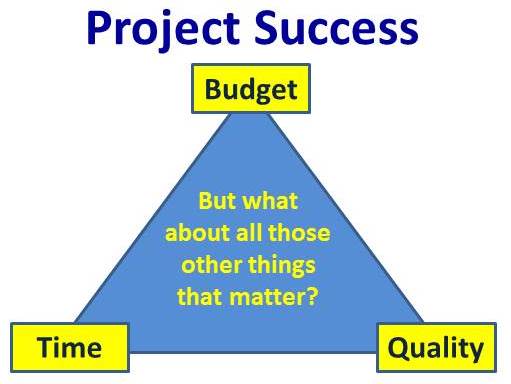Project Success

The media frequently reports adversely about major projects, usually referring to cost and time excesses. The main point of a published article (September 2009 http://www.evaluationcentre.com/project_management_software_psa_software/implementation/management_briefings.go ) is that success is in two parts:
- Project management: the part everyone tends to concentrate on, assessing whether the project is on time, on budget, and meets the quality requirements
- The project’s outputs, the real deliverables – are they successful? Can they be sustained?
It is the latter that is the most complex to assess. Although success criteria should be predefined to ensure that the deliverables meet specific requirements, determined by the client, the results are unlikely to be known until after completion of the project, sometimes a year or more afterwards.
As examples, suppose you are installing a new process with the intention of producing more value – more widgets/hour, more calls answered successfully per day, faster bookings, quicker payments. Your business case will have been based on the expected improvements after the project has been completed. But success will be measured in different ways by different people: are the customers happier? do they return? Are your staff satisfied with the new system? Are they able to deal with it more effectively and efficiently than its predecessor? Are suppliers happy? Have all of these contributed to the satisfaction of the shareholders and funding organisations?
To ensure that the project is successful you need to know in advance who will be responsible post-completion for maintaining the products, updating them, and in ensuring that everyone involved is kept informed about them. This aspect, sustainability, needs attention before and throughout the project.
Project success hinges on two separate factors: an appropriate approach to project management is certainly necessary, but so is having the ability to look after the project’s outputs so that they are used to meet the real needs of all the stakeholders including the supplier, customers, staff and shareholders. They will all have views on what success is, and their needs should be considered from the very beginning. When you set up your project, be sure what project success will be.
